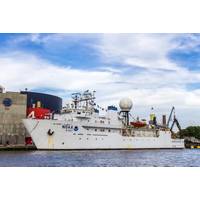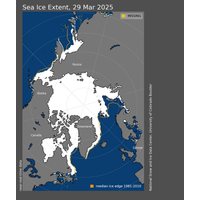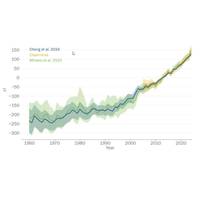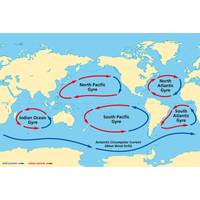
EU Pledges Over €300 Million for Ocean Conservation
The European Union announced €301,485,000 ($342.7 million) in EU funding to support actions in the fields of the sustainable blue economy, marine pollution, marine protected areas, digital oceans, sustainable fisheries, and ocean and climate change.The announcement was made at the Our Ocean Conference in Busan. The Conference is an international event, launched in 2014 and hosted by a different country each year, aiming to foster global ocean governance and action to support marine conservation and sustainable development.The European Union has committed to:Sustainable blue economy: €120

Project to Suck Carbon from the Sea Begins in UK
pilot plant – which has been built at Weymouth SEA LIFE Centre on the South Coast of England – has been funded by a £3 million grant from the UK Government’s Department for Business, Energy & Industrial Strategy (BEIS), as part of its search for technologies that fight climate change.It is one of 15 pilot projects being backed in the UK as part of efforts to develop technologies that capture and store greenhouse gases

White House Aims to Eliminate NOAA Climate Research
The administration of President Donald Trump aims to eliminate the arm of the National Oceanic and Atmospheric Administration (NOAA) that oversees research on climate change and refocus the U.S. fisheries service to support energy development, according to a draft White House budget document seen by Reuters.The moves are part of a plan to downsize NOAA dramatically, slashing agency funding by around $1.67 billion, or 27%, according to the proposal.The Office of Oceanic and Atmospheric Research, known also as NOAA Research, would be closed under the proposal, along with $480 million in funding for

Arctic Sea Ice Hits Record Low Maximum Extent for the Year
Arctic sea ice has likely reached its maximum extent for the year, at 14.33 million square kilometers (5.53 million square miles) on March 22, according to scientists at the National Snow and Ice Data Center (NSIDC) at the University of Colorado Boulder.The 2025 maximum sea ice extent is the lowest in the 47-year satellite record, falling short of the previous record low of 14.41 million square kilometers (5.56 million square miles) set on March 7, 2017.“This new record low is yet another indicator of how Arctic sea ice has fundamentally changed from earlier decades,” said NSIDC senior

A Graveyard for Glaciers
from glaciers contributed around 21% of the total sea-level rise over the period 1993–2018, around half the contribution from expansion due to ocean warming (42%) but larger than contributions from melting of the ice sheets in Greenland (15%) and Antarctica (8%).“The conversation about climate change can be very abstract, with many devastating statistics and sophisticated scientific models that may feel incomprehensible,” said Rice University anthropologist Cymene Howe back in 2019 when a memorial was unveiled, the first of its kind in the world, at the place where the Icelandic glacier

WMO Documents Spiraling Climate Impacts
The signs of human-induced climate change reached new heights in 2024, with some of the consequences being irreversible over hundreds if not thousands of years, according to a new report from the World Meteorological Organization (WMO).WMO’s State of the Global Climate report confirmed that 2024 was likely the first calendar year to be more than 1.5°C above the pre-industrial era, with a global mean near-surface temperature of 1.55 ± 0.13 °C above the 1850-1900 average. This is the warmest year in the 175-year observational record.WMO’s report showed that:• Atmospheric

The World’s Most Powerful Ocean Current Could Slow by 2050
and five times stronger than the Gulf Stream.It’s a powerful current that separates the Antarctic continent from its northern neighbors, acting as a physical and oceanographic barrier that isolates the icy continent.Over the years, there has been a lot of scientific debate about the impact of climate change on the ACC. The theory was that warming oceans around Antarctica should cause the ACC to speed up.Although recent research has shown that the ACC’s strength hasn’t changed significantly, the impact of Antarctica’s melting ice is less well understood by the science.The new study
NOC Secures £11M for Early Warning Systems
Scientists at the UK’s National Oceanography Center (NOC) are to lead critical research into forecasting a significant climate tipping point – the potential collapse of the Atlantic Subpolar Gyre. Through more than £11 million in funding from the UK’s Advanced Research + Invention Agency (ARIA), NOC will lead the development of novel and innovative new ways to detect early warning signs of a change in the Atlantic Subpolar Gyre.Sitting just south of Greenland and Iceland, the Atlantic Subpolar Gyre is a key component of the global ocean’s circulation system, transporti

An Arctic “Beyond Recognition” Expected by 2100
In 2024, annual average global air temperatures surpassed 1.5 degrees Celsius above pre-industrial levels for the first time, triggering extreme weather events like record-breaking rainfall and flooding events in the Sahara Desert and extreme summer heat waves across the planet.Based on the current pledges of countries for limiting their emissions of greenhouse gases, global temperatures are projected to reach 2.7 degrees Celsius beyond pre-industrial levels by the end of this century.A new review paper, published in Science on February 6, 2025, highlights the expected changes to the Arctic, the


 February 2025
February 2025





